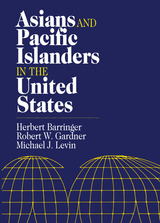
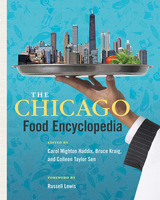


In Human Documents, Robert Gardner introduces the work of photographers with whom he has worked over a period of nearly fifty years under the auspices of the Film Study Center at Harvard. Their images achieve the status of what Gardner calls “human documents”: visual evidence that testifies to our shared humanity. In images and words, the book adds to the already significant literature on photography and filmmaking as ways to gather both fact and insight into the human condition. In nearly 100 images spanning geographies and cultures including India, New Guinea, Ethiopia, and the United States, Human Documents demonstrates the important role photography can play in furthering our understanding of human nature and connecting people through an almost universal visual language.
Author and cultural critic Eliot Weinberger contributes the essay “Photography and Anthropology (A Contact Sheet),” in which he provides a new and intriguing context for viewing and thinking about the images presented here.
With photographs by Michael Rockefeller, Robert Gardner, Kevin Bubriski, Adelaide de Menil, Christopher James, Jane Tuckerman, Susan Meiselas, and Alex Webb.
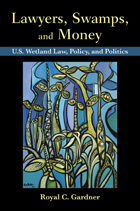
Lawyers, Swamps, and Money is an accessible, engaging guide to the complex set of laws governing America's wetlands. After explaining the importance of these critical natural areas, the book examines the evolution of federal law, principally the Clean Water Act, designed to protect them.
Readers will first learn the basics of administrative law: how agencies receive and exercise their authority, how they actually make laws, and how stakeholders can influence their behavior through the Executive Branch, Congress, the courts, and the media. These core concepts provide a base of knowledge for successive discussions of:
- the geographic scope and activities covered by the Clean Water Act
- the curious relationship between the U.S. Army Corps of Engineers and the Environmental Protection Agency
- the goal of no net loss of wetlands
- the role of entrepreneurial wetland mitigation banking
- the tension between wetland mitigation bankers and in-lieu fee mitigation programs
- wetland regulation and private property rights.
The book concludes with insightful policy recommendations to make wetlands law less ambiguous and more effective.
A prominent legal scholar and wetlands expert, professor Royal C. Gardner has a rare knack for describing landmark cases and key statutes with uncommon clarity and even humor. Students of environmental law and policy and natural resource professionals will gain the thorough understanding of administrative law needed to navigate wetlands policy-and they may even enjoy it.

Robert Gardner’s classic Dead Birds is one of the most highly acclaimed and controversial documentary films ever made. This detailed and candid account of the process of making Dead Birds, from the birth of the idea through filming in New Guinea to editing and releasing the finished film, is more than the chronicle of a single work. It is also a thoughtful examination of what it meant to record the moving and violent rituals of warrior-farmers in the New Guinea highlands and to present to the world a graphic story of their behavior as a window onto our own. Letters, journals, telegrams, newspaper clippings, and over 50 images are assembled to recreate a vivid chronology of events. Making Dead Birds not only addresses the art and practice of filmmaking, but also explores issues of representation and the discovery of meaning in human lives.
Gardner led a remarkable cast of participants on the 1961 expedition. All brought back extraordinary bodies of work. Probably most influential of all was Dead Birds, which marked a sea change in nonfiction filmmaking. This book takes the reader inside the creative process of making that landmark film and offers a revealing look into the heart and mind of one of the great filmmakers of our time.

From April to August 1961, recent Harvard graduate Michael Clark Rockefeller was sound recordist and still photographer on a remarkable multidisciplinary expedition to the Dani people of highland New Guinea. In five short months he produced a wonderful body of work, including over 4,000 black-and-white negatives.
In this catalogue, photographer Kevin Bubriski explores Rockefeller's journey into the culture and community of the Dani and into rapport with the people whose lives he chronicled. The book reveals not only the young photographer's growing fluency in the language of the camera, but also the development of his personal way of seeing the Dani world around him. Although Rockefeller's life was cut tragically short on an expedition to the Asmat in the fall of 1961, his photographs are as vivid today as they were the moment they were made.
Featuring over 75 photographs, this beautiful volume is the first publication of a substantial body of Michael Rockefeller's visual legacy. Rockefeller's extraordinary photographs reveal both the resilient spirit of the Dani people and the anthropological and aesthetic eye of a young man full of promise. In a Foreword, Robert Gardner provides a personal recollection of Michael Rockefeller's experience in the New Guinea highlands.

Three postconsular speeches.
Cicero (Marcus Tullius, 106–43 BC), Roman lawyer, orator, politician and philosopher, of whom we know more than of any other Roman, lived through the stirring era that saw the rise, dictatorship, and death of Julius Caesar in a tottering republic. In his political speeches especially and in his correspondence we see the excitement, tension and intrigue of politics and the part he played in the turmoil of the time. Of about 106 speeches, delivered before the Roman people or the Senate if they were political, before jurors if judicial, fifty-eight survive (a few of them incompletely). In the fourteenth century Petrarch and other Italian humanists discovered manuscripts containing more than 900 letters of which more than 800 were written by Cicero and nearly 100 by others to him. These afford a revelation of the man all the more striking because most were not written for publication. Six rhetorical works survive and another in fragments. Philosophical works include seven extant major compositions and a number of others; and some lost. There is also poetry, some original, some as translations from the Greek.
The Loeb Classical Library edition of Cicero is in twenty-nine volumes.

The statesman defends a friend and assails an enemy.
Cicero (Marcus Tullius, 106–43 BC), Roman lawyer, orator, politician and philosopher, of whom we know more than of any other Roman, lived through the stirring era that saw the rise, dictatorship, and death of Julius Caesar in a tottering republic. In his political speeches especially and in his correspondence we see the excitement, tension and intrigue of politics and the part he played in the turmoil of the time. Of about 106 speeches, delivered before the Roman people or the Senate if they were political, before jurors if judicial, fifty-eight survive (a few of them incompletely). In the fourteenth century Petrarch and other Italian humanists discovered manuscripts containing more than 900 letters of which more than 800 were written by Cicero and nearly 100 by others to him. These afford a revelation of the man all the more striking because most were not written for publication. Six rhetorical works survive and another in fragments. Philosophical works include seven extant major compositions and a number of others; and some lost. There is also poetry, some original, some as translations from the Greek.
The Loeb Classical Library edition of Cicero is in twenty-nine volumes.
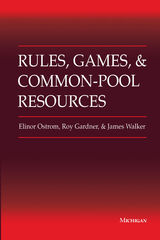

Still Points is a collection of remarkable and evocative still photographs taken by award-winning nonfiction filmmaker and author Robert Gardner during his anthropological and filming expeditions around the world. Thousands of his original photographic transparencies and negatives from the Kalahari Desert, New Guinea, Colombia, India, Ethiopia, Niger, and other remote locations are now housed in the Photographic Archives of Harvard’s Peabody Museum of Archaeology and Ethnology. This elegantly produced volume presents a curated selection of more than 70 color and black-and-white images made by Gardner between the 1950s and the 1980s. Edited by Adele Pressman, Gardner's wife and literary executor, and with a foreword by Eliot Weinberger, Still Points both honors an important and influential artist and reveals new dimensions in his work.
“There at the end of the endless cycles of time and the loops of film is stillness, and these still photos.”—From the foreword by Eliot Weinberger
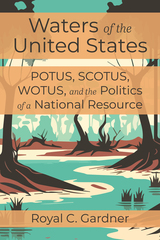
Waters of the United States is an unprecedented exploration of this history—and its importance for today’s efforts to conserve a critical natural resource. The book not only examines how bodies of water are legally defined (and therefore protected), but who gets to decide on these definitions. The result is a fascinating look at the ongoing power struggle between the president and federal agencies, the courts, the states, and Congress, over water quality.
Waters of the United States offers the detailed analysis necessary for any lawyer or environmental advocate to understand the nuances of water policy, while spinning a compelling narrative for readers who have never cracked a law book. The unique mix of insights into environmental law, history, and politics is required reading for anyone who cares about the future of the nation’s water.
READERS
Browse our collection.
PUBLISHERS
See BiblioVault's publisher services.
STUDENT SERVICES
Files for college accessibility offices.
UChicago Accessibility Resources
home | accessibility | search | about | contact us
BiblioVault ® 2001 - 2024
The University of Chicago Press









